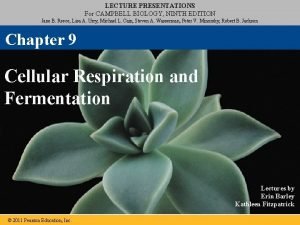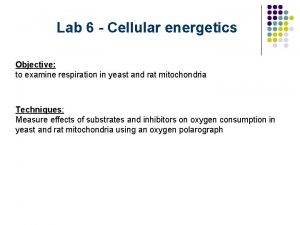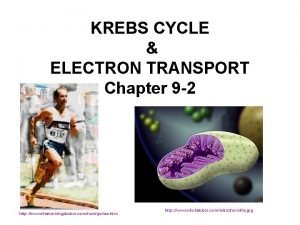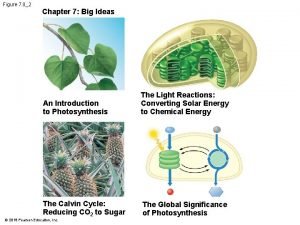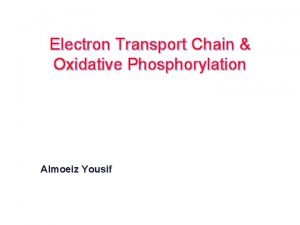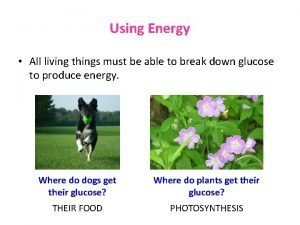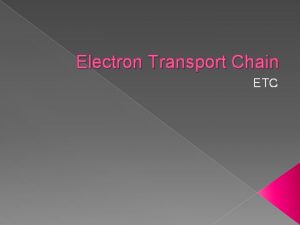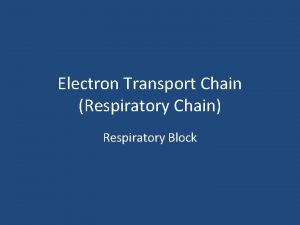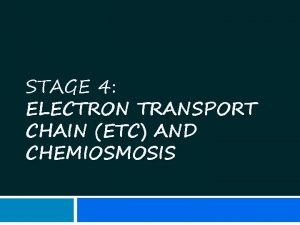Electron Transport Chain ETC ETC Consists of four






- Slides: 6

Electron Transport Chain ETC

ETC � Consists of four protein-lipid complexes located in the inner membrane of the mitochondrion. › These complexes aid in the transfer of electrons to oxygen. › Electrons are most commonly transferred in association with hydrogen atoms or hydride (H-) ions.

Goal of the ETC � Reducing equivalents containing a highenergy hydrogen and electron pair gain entry to the beginning of the chain. � The hydrogen and electron then move from areas of electronegativity (NAD+) towards areas of electropositivity (atomic oxygen). � Produce ATP

ETC

ATP and the ETC 2 ATP are produced per glucose molecule in the cytoplasm. � For every molecule of NADH, 3 ATP are produced. For every molecule of FADH, 2 ATP are produced. � Glycolysis yields 4 -6 ATP’s in the mitochondria in addition to the two formed in the cytoplasm. � Together with the ATP formed in the TCA cycle and the ATP produced as the result of reducing equivalents donated from the TCA cycle to the ETC, the ATP yield per glucose is 36 to 38 molecules of ATP. �

Summary of Cellular Respiration Net number produce d (+) or consum ed (-) by each reaction Glycolys Pyruvate Betais decarb- oxidatio oxylatio n (ex: 16 n -C Palmitic Acid) TCA cycle Electron Total Transpor t Chain ATP +2 0 -2 +2 +34 +38/ 96 Glucose -1 0 0 -1 NADH +2 +2 +7 +6 -10/-17 0 Acetyle. Co. A 0 +2 +8 -2/-10 0 0 CO 2 0 +2 +2 +4 0 +6 Pyruvate +2 -2 0 0 FADH 2 0 0 +7 +2 -2/-9 0 O 2 0 0 -6 -6
